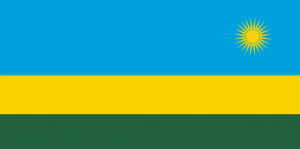Language/Kinyarwanda/Grammar/Asking-Questions
Asking questions is a fundamental part of communication in any language, and Kinyarwanda is no exception. In this lesson, you will learn how to form questions in Kinyarwanda, including yes/no questions, wh-questions, and tag questions. Understanding how to construct these types of questions is essential to building your conversation skills and being able to communicate effectively with Kinyarwanda speakers.
Yes/No Questions
Yes/no questions are questions that can be answered with either 'yes' or 'no'. In Kinyarwanda, you can form a yes/no question by simply adding "-ya?" to the end of a statement or sentence.
For example:
| Kinyarwanda | Pronunciation | English |
|---|---|---|
| Wowe wumva neza. | wo-we wum-va ne-za | Do you understand me? |
| Uri umunyeshuri. | u-ri u-mu-nye-shu-ri | Are you a student? |
As you can see from the examples, "-ya?" is added to the end of the statement to turn it into a question. Note that the question particle "-ya?" is always placed at the end of the sentence.
Wh-Questions
Wh-questions are questions that start with words like 'what', 'when', 'where', 'who', 'why', and 'how'. In Kinyarwanda, Wh-questions are formed by adding a wh-word at the beginning of the statement, followed by the verb and the subject.
For example:
| Kinyarwanda | Pronunciation | English |
|---|---|---|
| Urakoze nitwa nde? | u-ra-ko-ze ni-twa n-de | What's your name? |
| Utugari turi he? | u-tu-ga-ri tu-ri he | Where are we? |
As shown in the examples, Wh-questions in Kinyarwanda start with a wh-word (like "what" or "where") followed by the verb and the subject.
Tag Questions
Tag questions are questions added to the end of a statement to confirm or deny something. In English, tag questions use 'isn't it?', 'right?' or 'don't you?' at the end of a statement. In Kinyarwanda, the tag question '-nta?' is used, which is equivalent to 'isn't it?' in English.
For example:
| Kinyarwanda | Pronunciation | English |
|---|---|---|
| Ese nimuze | e-se ni-mu-ze | You're coming, right? |
| Njye niba ufite ikinyarwanda, | ny-je ni-ba u-fi-te i-ki-nya-rwan-da | I can talk if you speak Kinyarwanda, can't I? |
In Kinyarwanda, the tag question "-nta?" is added to the end of a statement to create a tag question. It functions as a tag question by inviting the listener to confirm or deny what has been said.
Negation in Questions
In Kinyarwanda, asking negative questions is a bit nuanced. One way to ask a negative question is to use the word 'nti' which means 'not yet' or 'haven't'. Another way is to add 'se' to the end of a statement to convert it into a negative question. It is equivalent to the English 'didn't' or 'aren't'.
For example:
| Kinyarwanda | Pronunciation | English |
|---|---|---|
| Nti wabonye umuntu? | n-ti wa-bo-nye u-mu-n-tu | Haven't you seen anyone? |
| Hari hantu se? | ha-ri han-tu se | Are there no people here? |
In Kinyarwanda, negation in questions can be formed by using 'nti' or 'se'. These words are added to affirmative statements to make them negative.
Conclusion
In this lesson, you have learned how to form questions in Kinyarwanda, including yes/no questions, wh-questions, and tag questions. You have also learned how to form negative questions using 'nti' and 'se'. By mastering these constructs, you will be able to build your conversational skills and communicate effectively with Kinyarwanda speakers. Practice these constructs to build your confidence and fluency in Kinyarwanda!
Other Lessons
- Conditional Mood
- Present Tense
- Describing Verbs
- How to Use Be
- Gender
- Plurals
- Negating Sentences
- Describing Nouns
- Noun Classes
- Questions

